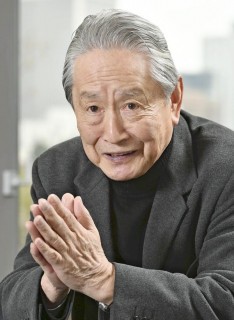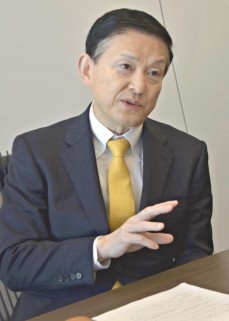Loading
Search
▼ Japan Electronics Industry Hit Hard In Heisei Era
- Category:Other
In the three decades of the Heisei era, major Japanese electronics companies, the mainstays of Japanese industry, were beaten in global competition in many fields, including semiconductors, TVs, mobile phones and computers. What lessons did the Heisei era leave for the electronics industry and what challenges are coming in the future? The Yomiuri Shimbun asked Nobuyuki Idei, former chief executive officer of Sony Corp., and Yasuo Naruke, president of Toshiba Memory Corp., about this issue.
Failed to shift from manufacturing to IT
For electronics manufacturers in Japan, the Heisei era has represented 30 years of hardship. It was a winner-takes-all situation for Japan during the first half of the 1980s, when the semiconductor industry was thriving, but the yen soared after the 1985 Plaza Accord, and Japan’s manufacturing industry was shaken by international competition. In the 1990s, all Japanese companies could do was repay the remaining debt after the collapse of the bubble economy.
On a global level, the Cold War between the United States and the Soviet Union had come to an end, and the information technology revolution was about to begin. In 1993, before I came to serve as president of Sony, I heard then U.S. Vice President Al Gore give a speech about the concept of the “information superhighway.”
He stressed that all computers would be connected via high-speed communication lines and that the focus would be on finance and e-commerce. I felt extremely anxious about missing the opportunity to join the internet society.
However, Japan had not realized the importance of IT. Despite the rapid changes happening in the shift from the analog to the digital world, we were not able to budge the country from the traditional style of manufacturing.
GAFA — Google, Apple, Facebook and Amazon — came into being in the United States, while the same happened with BAT — Baidu, Alibaba and Tencent — in China. Meanwhile, in Japan, nothing. The country completely missed the boat in terms of the move from the exports of goods to IT.
Until the 1990s, ideas were about concrete objects, but from the 2000s onward, this changed. The iPhone is symbolic of this. In Japan, manufacturers were like subcontractors, only able to make products based on specifications decided by telecommunications companies. They weren’t able to innovate even if they’d wanted to.
As new technologies such as artificial intelligence and blockchain are required in the new era, we can expect start-up companies to emerge one after the other. We want to create an environment in which start-ups can grow. In this context, even major companies must change in order to survive.
■ Nobuyuki Idei
Former CEO of Sony Corp.
Idei, 81, was born in Tokyo and joined Sony Corp. in 1960. After becoming president in 1995, he went on to be chief executive officer and chairman. He founded the consulting and investment company Quantum Leaps Corp. in 2006, where he serves as CEO.
Bold investments vital to survive
The Heisei era was one of hardship, reflection and the lessons learned from these experiences. We learned that we should not surrender our mainstream product lines.
I’ve been working with semiconductor memory for many years. South Korea was commoditizing products in certain fields and investing in them, and when South Korea was emerging, we concentrated on products in the high price range, moving away from the mainstream. There is no point in creating niche products. If you stop manufacturing for the volume zones with the highest level of demand, it is the end of the road for your company.
During the mid-2000s, I visited Samsung Electronics Co. in South Korea. As people arrived for work in the morning, I saw employees getting off about 50 buses and entering the research building. What’s more, they were all young, in their 20s and 30s. I sensed the danger of Japan being outdone by South Korea in terms of technology. Masses of patent applications were also being made.
Meanwhile, Japan was performing strongly with household electric appliances, and as general electronics manufacturers, there was no drive to specialize in a particular area. Yet when the profit-loss situation started to worsen, everyone was looking at the figures right away. Managers made simple cutbacks, saying, “We can’t compete when it comes to cost.” But doing this just pushes you along the path to decline.
It’s important to be conscious of costs, to manufacture slightly better products cheaply, and to not be outdone on speed. You have to commit to boldly investing funds and human resources for that purpose.
I keep reiterating to our young employees that they must not be afraid of failure.
Now that the Heisei era is over, we finally have an environment where we can work hard with a humble attitude. Based on the lessons we’ve learned, we’re refining our technology for mass production. Because we’re making use of information technology and artificial intelligence, we hardly have any workers on the factory floor these days. To survive in the future, we can’t worry about style. We can’t lose the battles that are coming.
■ Yasuo Naruke
Toshiba Memory Corp. President
Naruke, 64, was born in Chiba Prefecture and joined Toshiba Corp. in 1984. He has consistently worked in the semiconductor field, becoming manager of Toshiba’s memory division in June 2010 and vice president in September 2015. He has served as president of Toshiba Memory since April 2017, resigning as a Toshiba Corp. director in October that year.
Meanwhile, Japan was performing strongly with household electric appliances, and as general electronics manufacturers, there was no drive to specialize in a particular area. Yet when the profit-loss situation started to worsen, everyone was looking at the figures right away. Managers made simple cutbacks, saying, “We can’t compete when it comes to cost.” But doing this just pushes you along the path to decline.
It’s important to be conscious of costs, to manufacture slightly better products cheaply, and to not be outdone on speed. You have to commit to boldly investing funds and human resources for that purpose.
I keep reiterating to our young employees that they must not be afraid of failure.
Now that the Heisei era is over, we finally have an environment where we can work hard with a humble attitude. Based on the lessons we’ve learned, we’re refining our technology for mass production. Because we’re making use of information technology and artificial intelligence, we hardly have any workers on the factory floor these days. To survive in the future, we can’t worry about style. We can’t lose the battles that are coming.
■ Yasuo Naruke
Toshiba Memory Corp. President
Naruke, 64, was born in Chiba Prefecture and joined Toshiba Corp. in 1984. He has consistently worked in the semiconductor field, becoming manager of Toshiba’s memory division in June 2010 and vice president in September 2015. He has served as president of Toshiba Memory since April 2017, resigning as a Toshiba Corp. director in October that year.
- May 1, 2019
- Comment (0)
- Trackback(0)



